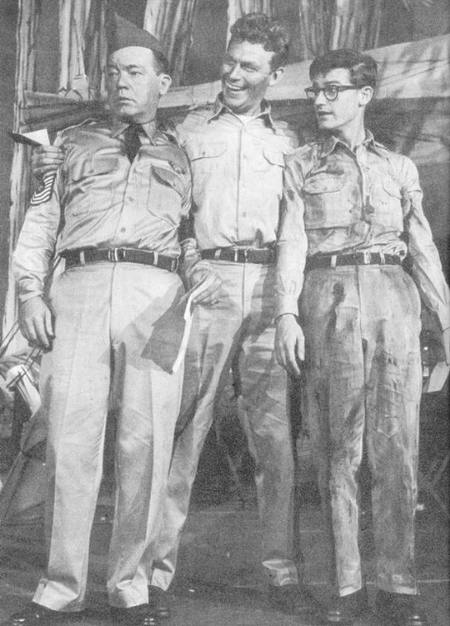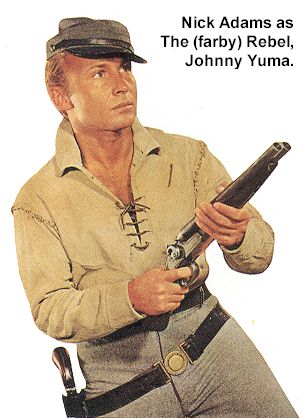Sparky: Don Knotts to Nick Adams to Kumi Mizuno - Yeah! Kumi even links back to "What's Up Tiger Lily?" and "Samurai Pirate" — she's basically as cool as all get out ...
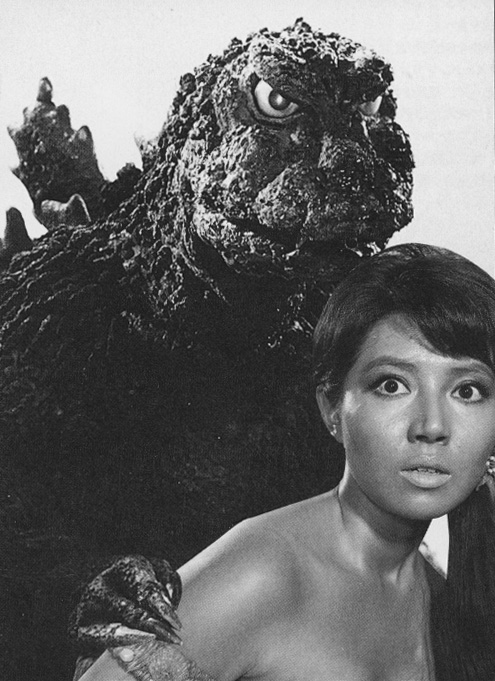
Sweet Kumi and the Big G ... In Godzilla vs. the Sea Monster, she is a native of a South Seas island, as Godzilla is kicking the crap out of Ebirah, a big ugly critter. One rumor was Nick was so sad to leave her in Japan — where he was basically lionized as an authentic Hollywood Movie Star — he accidentally suicided ...
Best known for her role of Miss Namikawa in Invasion of Astro-Monster (1965). Kumi Mizuno is, indisputably, Toho's most popular actress. Mizuno was born in 1937 with the birth name Maya Igarashi. By the time she started working for Toho on A Bridge for Us Alone (1958), her second movie, her name had changed to Kumi Mizuno. In the late 50's and early 60's Mizuno's career was booming, and she quickly became a favorite of director Ishiro Honda.
Mizuno was often paired with Nick Adams, whenever he did a film for Toho; consequently, rumors of a romance between the two were common occurrence until Mizuno denied it during a interview in 1996. Despite the huge number of films she did early on in her career, Mizuno is best known for her Sci-fi roles in the two Godzilla films and the two Frankenstein films done by Toho in the mid 60's. She became such a cult figure amongst the kaiju fandom that Toho brought her back in 2002 to play a role in Godzilla Against Mechagodzilla ... and again in 2004's Godzilla: Final Wars with her hot granddaughter Maki Mizuno.
Good genes - enough said - eh?
Additional note - the ???? is how blogger deals with most Kanji. Mea Culpa ...
Invasion of Astro-Monster AKA Monster Zero or Godzilla Versus Monster Zero
| Invasion of Astro-Monster | |
|---|---|
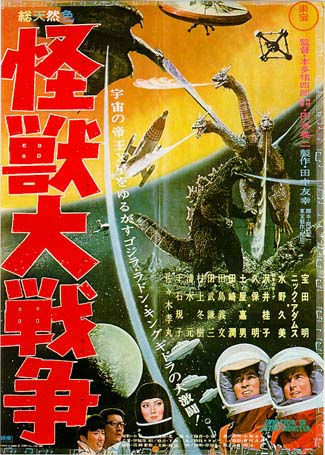 | |
| Directed by | Ishira Honda |
| Produced by | Tomoyuki Tanaka |
| Written by | Shinichi Sekizawa |
| Starring | Akira Takarada Nick Adams Kumi Mizuno |
| Music by | Akira Ifukube |
| Cinematography | Hajime Koizumi |
| Editing by | Ryohei Fujii |
| Distributed by | Toho |
| Released | July 30, 1961 |
| First Screened | 1961 |
| Running time | 101 min |
| Language | Japanese English |
| Budget | |
| Preceded by | Furankenshutain tai chitei kaijû Baragon |
| Followed by | Furankenshutain no kaijû: Sanda tai Gaira |
| IMDb profile | |
Invasion of Astro-Monster (????? - Kaiju Daisenso, "Monsters' Large War"), also known to U.S. audiences as Monster Zero and Godzilla vs. Monster Zero, is a Toho daikaiju eiga released in 1965 and direct sequel to Ghidorah, the Three-Headed Monster. It is sixth in the Godzilla series, popular in the West for having the Japanese series' only Hollywood lead, Nick Adams. It is the first Godzilla film to feature humanoid alien invaders and the last to feature the popular 1960s tokusatsu team of director Ishiro Honda, screenwriter Shinichi Sekizawa, and special effects director Eiji Tsuburaya.
Plot
During a manned mission to Planet X behind Jupiter (not to be confused with the hypothesized Planet X), the astronauts encounter inhabitants called Xilians who ask to borrow the two Earth-bound Monsters Zero-One (Godzilla) and Zero-Two (Rodan) to combat their own terror, Monster Zero.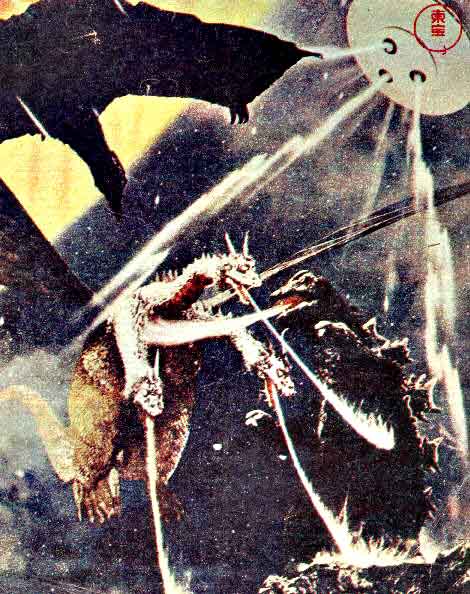
At the outset of the movie, the two-man spacecraft, crewed by one Japanese and one American (Fuji and Glenn), is approaching Jupiter to visit the newly-discovered "Planet X", which inexplicably maintains a position directly behind Jupiter (in its Lagrangian libration point?). The planet is rather dark, but still lit up enough to be visible and for it to be possible to navigate its surface. The spacecraft lands, and the astronauts disembark.
One astronaut vanishes, and the other wonders where he... and the spacecraft... have gone, and then a flat voice intones to him, instructing him where to go. The astronauts are led through subterranean corridors to the office of the Controller of Planet X (which, curiously, is the name that the Controller uses from this point on: Planet X).
The spacecraft is safe, he assures them, and indicates that they are about to be attacked. The astronauts recognize the attacking creature: Ghidorah, the three-headed monster. After a brief black-out, when the astronauts are cut off from being able to see and hear the Controller, they are assured that the monster, known as Monster Zero, has left.
The Controller says that they want Earth's help: to be allowed to capture Monsters Zero One and Zero Two, known to Earthmen as Godzilla and Rodan. In return, Planet X will gift humanity with a wonder drug that cures all diseases. The astronauts agree to return to Earth with the proposal. As they lift off, they say on the radio to the Controller, "We're glad we found friends on Planet X."
Meanwhile, Fuji's girlfriend has a brother, Tetsuo, who's invented a personal alarm he thinks women could use to summon assistance if they're endangered. It creates a horrific loud noise that can be heard blocks away, and wonders why nobody's interested in buying it, but then a Miss Namikawa comes and makes an offer to buy it as an educational device, but keeps putting Tetsuo off on completing the deal.
Fuji and Glenn arrive home, and tell their superiors of the offer by Planet X. Scientists begin searching for Godzilla and Rodan. Then, the Controller of Planet X makes mysterious appearances on Earth, and Glenn becomes suspicious about Planet X. The Controller finally makes his appearance overt, "apologizes" for his unannounced presence, and offers to help locate the two monsters. Two Planet X spacecraft rapidly fly off and extract the two monsters.
Glenn, Fuji and one of their superiors are invited aboard a spacecraft to accompany the Controller back to Planet X, a trip that takes only a few hours; the Controller says that soon they'll be able to travel as fast as light. On reaching Planet X, there is almost immediately an attack by Ghidorah, and the two from Earth are released to battle it. Ghidorah is driven off, and the Controller exults about that. He presents a box that, he says, contains information about the miracle drug, and presents the three men with a faithful duplicate of their spaceship so they can fly home.
On arrival, the box is taken to a special international meeting and is opened to find a reel-to-reel tape. It is loaded onto a machine and set up to play. When the speakers remain silent for a long period, some wonder if the systems are compatible, but others say their system is exactly the same as ours. (One could have said, "they set up to duplicate our system".) Finally, there is a beep, and the voice begins. "This is the Controller of Planet X. You will listen to my instructions..." It is an ultimatum to surrender to Planet X.
The aliens arrive, destroy the spacecraft, and threaten to release the three creatures, which are now all under Planet X's control. In a show of confidence, the aliens even betray the method of control: magnetic waves. The Earth scientists realize that they could exploit this information, and work rapidly to find a way to disrupt those magnetic waves, while in the meantime, Earth's armies fight nearly in futility with conventional weapons as the monsters wage most of their destruction against Japan.
Tetsuo, meanwhile, is dissatisfied with the lack of progress on his device, and his inability to get Miss Namikawa to tell him what's happening. He gets imprisoned by the Planet X soldiers. When Glenn, who was infatuated with Miss Namikawa, is also arrested after finding out something about her - she's from Planet X and all their women are virtually identical, he and Tetsuo put clues together. Namikawa gave Glenn, before she was disintegrated by a Planet X soldier, a letter, and in it she says that one simple sound will destroy the people of Planet X. It is the sound made by Tetsuo's "lady beware alarm". He still has the prototype, takes it out and sets it off. It upsets and paralyzes the Planet X soldiers and Glenn can immobilize them and they escape.
They reach the space center scientists and explain about the device. Arrangements are made to broadcast it on all radio and television stations, a tactic that will be employed when the magnetic disruption devices are deployed.
The three monsters are removed from Planet X control, as Planet X spacecraft explode and personnel escape the noise by blowing up ships. Planet X withdraws its attempts to conquer Earth. Mean wile Godzilla atackes Zero with the aid of Rodan. Forcing Zero into a retreat.
Glenn and Fuji are to be sent to Planet X again as ambassadors to seek peaceful relations.

She was babe-a-licious then ...
This is the SF kiddy movie which shows the human side to the big guy ...
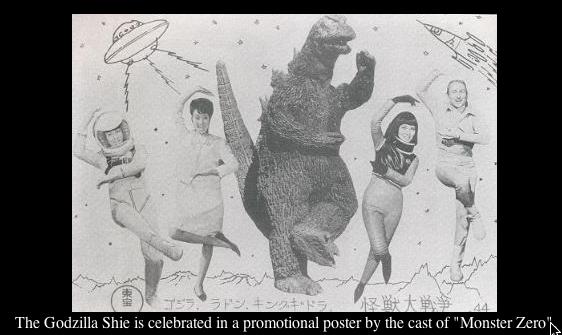
Godzilla can rock out, man. Best victory dance ever.
This film features very young Akira Takarada as Fuji. He would later play the hotel executive victimized by the yakuza in Minbo.
In the previously mentioned Gojira tai Mekagojira (2002) ... the talented Kumi Mizuno is 1999 Prime Minister Machiko Tsuge. But now we're going to talk Godzilla Final Wars ... which gives homage to the great Toho SF films that gave us such happy mindless pleasure as a youth.
Godzilla: Final Wars
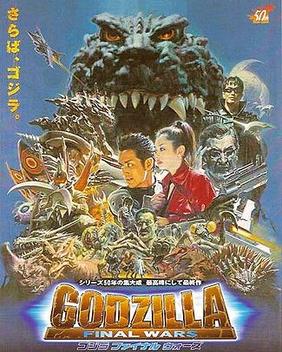
Godzilla: Final Wars (2004) is the 50th anniversary film and the 28th installment in the Godzilla series of films. The movie was released theatrically in Japan on December 4, 2004 grossing an estimated ¥1,200,000,000 ($10,000,000). Godzilla: Final Wars has the largest budget ever used in the Godzilla franchise around ¥2,000,000,000 ($20,000,000). It was directed by Ryuhei Kitamura and produced by Shogo Tomiyama. The film was released on DVD and Video in Japan on July 22, 2005, and in America on Columbia/Tri Star DVD on December 13, 2005. Contrary to the title, this will not be the last Godzilla movie, as Toho has decide to temporarily "retire" the character for a period of 5-10 years in order to renew interest in the series later.
Plot
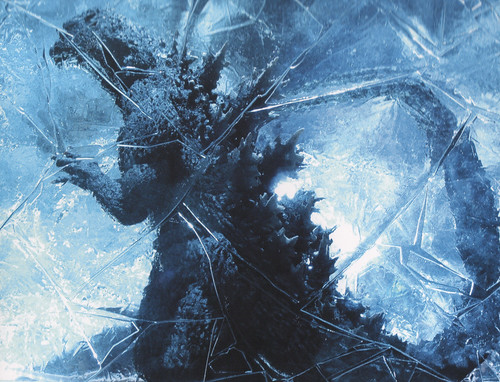
Godzilla frozen in ice.
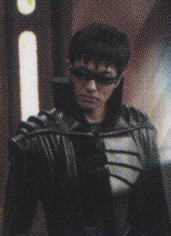
The Xillian Kid
Tuna eating Zilla rampages through Sidney Australia
A huge asteroid, by the name of Gorath, according to the Xilians, is on a collision course with Earth. All the military weapons of the Earth are to go to the point where the asteroid will hit so they can destroy it. Along with the help of the Xilians, Earth will be saved. But, Ozaki, a soldier at EDF, Miyuki and Captain Gordon don't trust the Xilians. They notice that the UN Secretary General and all the Xilians don't blink. They retrieve a blood sample from the UN Secretary General and find its not human. During a live TV interview with the Secretary General and the Xilian Commander and Vice-Commander, Gordon shoots the Secretary General. His face splits open to reveal the true Xilian face. The Vice-Commander shoots his superior making him the ruler of his fleet. He calls some reinforcments to help him fight Gordon and Ozaki. Gordon then calls in a bunch of Mutant soldiers. The Xilian Commander somehow takes control of the Mutants and turns them on their friends. Gordon, Ozaki, and Miyuki manage to escape and get into a truck, but then a Mutant attacks them on a motorcycle. Ozaki gets on his motorcycle in the back of the truck and chases the other Mutant away from his friends.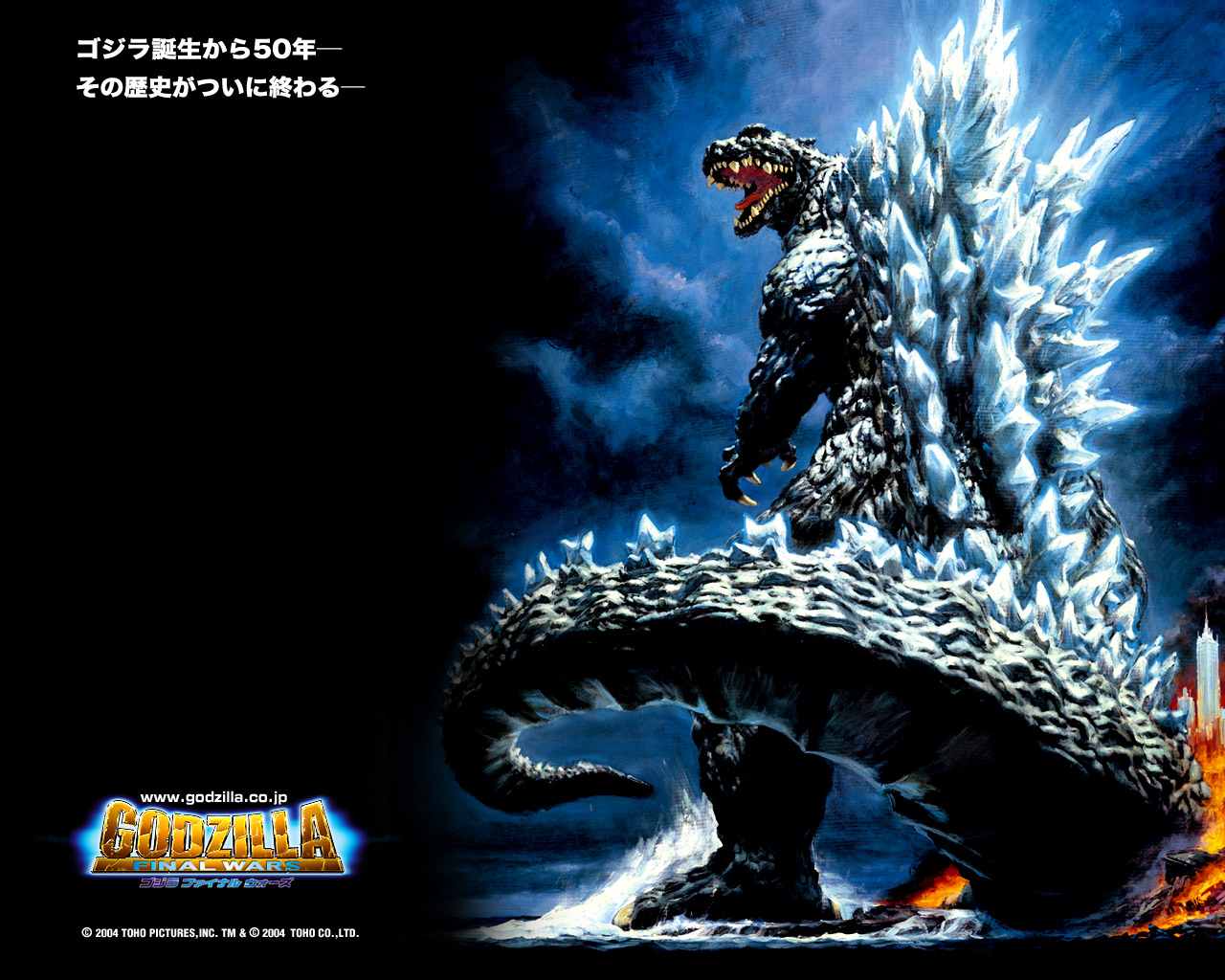
They get on the Gotengo along with some non-mutant pilots and they decide to go to the South Pole and wake up Godzilla. On their way there they run into Gigan, a powerful Cyborg monster over 12,000 years old and who had just been resurrected by the Xilian Commander to destroy the EDF Headquarters and the surrounding area. They manage to fire some missiles and wake up Godzilla who fights Gigan until Godzilla obliterates the head via his atomic beam. Godzilla follows the Gotengo to Sydney where he fights and defeats Zilla, then to New Guinea where he triumphs over the enormous desert turantula, Kumonga. He then battles Kamacuras in Japan. After arriving at Mt. Fuji, Godzilla has to fight Anguirus, Rodan, and King Seesar. Eventually Godzilla is victorious. After getting to Tokyo the Xilian Commander sends out his last remaining monsters to stop Godzilla, Hedorah (a monster not seen earlier in the film and only making a cameo appearance), and Ebirah, though by now, it has become pointless as it is obvious Godzilla will not be stopped.
<>
Godzilla running to a fight.
The Gotengo fights hundreds of small Xilian Fighter ships to the Mothership where it drills through its hull after disabling the shield generator. The Xilians take the crew by surprise and beam aboard the ship just as the Maser cannon is about to be fired. Irritated at their drilling through the ship, the Commander orders the majority of the crew to be annihilated while sparing the main characters. He then has them brought unto the ship and taken captive. Meanwhile, the mystical twin Shobijin pray for Mothra's aid and she launches off the island with great light and speed. Back on the ship, the Xilian Commander decides to give the old "Before you die I'm going to tell you all of my little Secrets of my Magnificent Plot" treatment. He explains that the Xilians bred the Mutants and altered the monster's DNA by inserting M-base into their DNA sequence. It turns out that anything with M-base is subject to complete control via telepathy of the Xilians and causing them to do the alien's will. Ozaki asks why he wasn't affected since he is a Mutant. The Commander explains that he and Ozaki are a special kind of Mutant called a Kaiser, which have special kinds of attributes. Meanwhile, the enormous neutron star has nearly reached Earth and Godzilla has sighted the small, but growing speck of light in the sky. He reacts by slamming his feet and tail into the ground to lock himself in position. He inhales streams of charged energy and releases his own Finishing beam that bolts throught the sky and into space. The beam collides with the massive ore, but despite all his effort, the asteroid reaches Earth anyway and creates a collosal, shockwave explosion that blasts a crater into the ground. Then, a new mystery monster, by the name of Monster X, comes down from the sky and lands slowly behind Godzilla via anti-gravity. It is quite obvious that this monster is intended as Godzilla's final foe and whose sole purpose to is to eliminate Godzilla successfully. The monsters stare each other down for a while in the eeriest scene in the movie. Finally, the silence is broken as the monsters immediately charge at each other and a long battle ensues between the great titans. Godzilla is quickly overcome and falls to his knees to the mighty power of Monster X as it has been realized that this new nemisis is by no means an easy challenge like the previous monsters. Mothra appears and the Xilians release a repaired and upgraded Gigan to fight Mothra. Gigan eventually defeats Mothra, or so it seems, and heads towards Godzilla's battle with Monster X. Back at the major fight, Monster X fires off two quick shots of his electrical gravity bolts from his eyes as Godzilla continues to advance towards him. Unexpectedly, Gigan's Cluster Light beam blasts from the sky and hits Godzilla's back. Gigan crash-lands on his feet as he starts up his new chainsaw hands and intimidates Godzilla. Things look bleak as Gigan has teamed up with the uber Monster X to take on Godzilla in a two-on-one battle.
On the Mothership the Xilian Commander explains that the reason the Xilians invaded Earth was because they needed the Human body to feed on. The mitochondria from cells would be farmed from the Humans and used to keep the Xilian race alive. Since the Commander had said everything he needed he calls in his Soldiers to kill our Protagonists. Instead Ozaki, Gordon, and Miyuki fight back. Ozaki tells them to get to the ship while he holds off the Commander. As Ozaki is getting kicked around by the Commander's Kaiser powers he finally calls upon his own and begins to fight back, finally injuring the Commander fatally. He rushes to the Gotengo as the Mothership begins to self-destruct. Mothra continues fighting Gigan after dive-bombing Gigan and Monster X and revealing she was in fact alive. Gigan fires off two razor disks at Mothra who avoids them, and alters their targeting system through her golden scales, causing them to malfunction. Gigan fires his laser this time which hits Mothra and sets her on fire. Gigan, satisfied with his victory, turns to return to Monster X's side and finish Godzilla. However, his razor disks, shorted out by Mothra's pollen, fly back and slice through his neck. Gigan turns around, thinking Mohtra survived, but his head falls off of his body just as he starts up his chainsaw hands. Mothra then emerges from the smoke, ignited in flames, and crashes into Gigan, destroying him in a thick explosion forever permanently.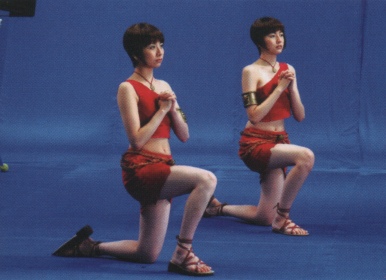
More fairies
The Gotengo takes off just as Ozaki gets in. The Mothership is finally ripped apart by mighty explosions and stress. Back at the fight, Godzilla and Monster X stand among the flames of the ruins of Tokyo and the Mothership, roaring and challenging each other. Godzilla charges and fires his beam quickly as Monster X responds the same and their beam weapons connect, causing a fiery conflaguration to engulf the battle ground. Godzilla slowly struggles to get up as Monster X appears rather weak and unable to get to his feet. It is revealed, however, that Monster X has one last trick up his sleeve. Finally succumbing to this last resort, Monster X slowly changes form. Massive beating wings erupt from his back, as his shoulder heads and shoulders pull outward. Godzilla merely stands there in puzzlement at what's going on. Monster X's tail splits into two complete whiplike tails as his body shape enlarges and becomes a quadrupedal shape. Finally, his heads all extend on long necks and fully develop their individual features as he has now become the demonic Kaiser Ghidorah (officially named by Toho as Monster X 2). The monster towers above Godzilla as Godzilla tries his beam again, but this time proves to be a terrible mistake. Just as his beam nearly hits Kaiser, he releases his own triple streams of electricity from his mouths that collide with Godzilla's and push back. They both struggle to win this beam war, until KG's beam shoots forward and slams Godzilla to the ground. For a brief portion of the fight, KG continues to assault Godzilla by lifting him into the air by his gravity beams and throwing him around and rendering Godzilla weaker and weaker. Finally, Kaiser Ghidorah brings Godzilla in to finish him off. He crushes him underneath his massive body and kicks Godzilla into a building. He proceeds by galloping at Godzilla and clamping down with all three of his mouths. The Gotengo's crew watches in horror as KG suspends Godzilla in the air with its powerful jaws and drains the life and energy out of Godzilla. Ozaki decides to use his "Kaiser" power and give Godzilla an overdose of his energy through the ships Maser cannon and launching a special beam. Godzilla roars in power as he releases a heavy dose of his energy right into KG's body and gets free of his grasp. He decapitates two heads with his beam and uses the third head as a handle as he throws Ghidorah around like a ragdoll. Finally, Godzilla tosses Ghidorah into the atmosphere, and releases a super-powerful Hyper Beam in a brilliant flash of light that destroys Ghidorah in an atmospheric explosion visible from space. Godzilla turns his fury and attention back to the Gotengo he was chasing earlier and blasts it with his regular beam causing it to rocket throught the air and crashland through buildings and rubble. Only Minya comes in to spare the humans from Godzilla's wrath, as does his human companion protect Godzilla from the humans. It can be interpreted that this is an armistice between the King of Monsters and mankind. Godzilla heads out to sea, and Minya follows into the sunset after mustering his own atomic ray, signaling Godzilla's eternal legacy.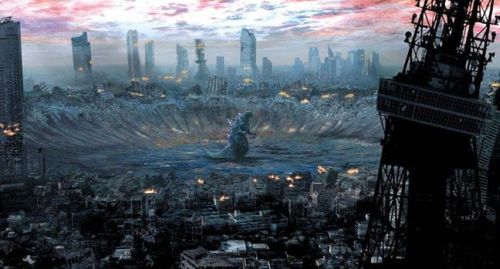
Reaction
Godzilla Final Wars had mixed reviews from fans. It was supposed to be Godzilla's perfect 50th Anniversary film but didn't feature a lot of screen time for Godzilla. Another big thing was the overall feel to the film. Many elements were things that would never be expected for a Godzilla film such as the action and overly used Alien Invasion plot which the film is focused on for much of its running time. Other fans love the monster fights which seem to be one of a kind although some criticize the death of Zilla being a fan favorite of his own.
Another thing to mention is The Matrix and Star Wars rip-offs in the film, which have attracted much criticism from audiences. However, it is essentially a pop-corn movie, more entertaining than serious.
The monster fights in this movie are strangely short. Most of the monsters seem to suffer from the stormtrooper effect. That caused many people to give it not-so good reviews.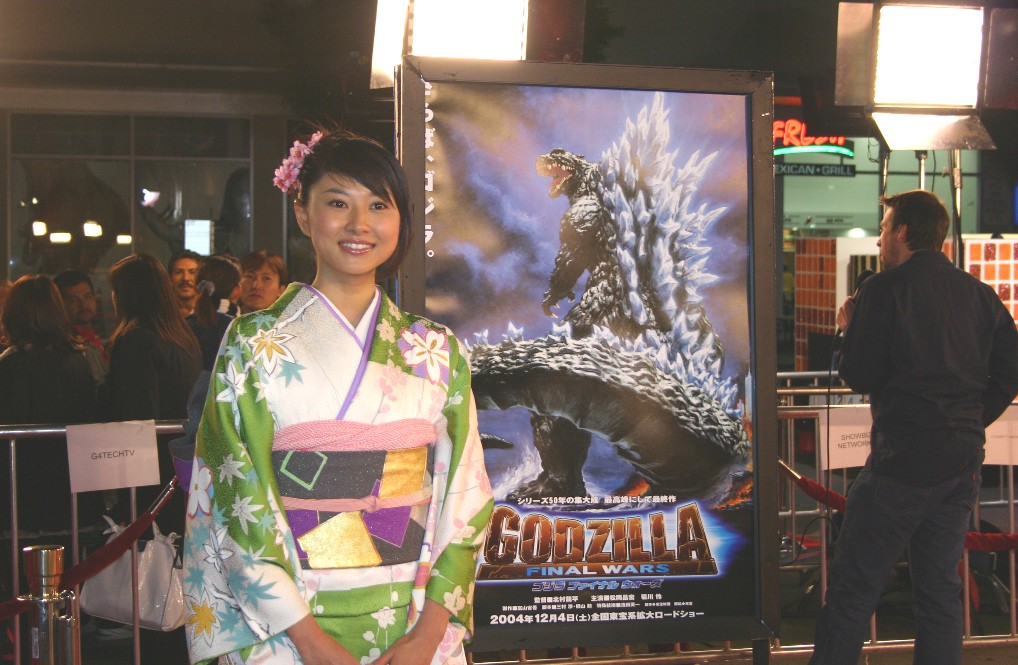
The Hollywood debut at the Egyptian Theatre
Music
The Music in Godzilla Final Wars was done by British composer Keith Emerson. Many mixed reviews concern the music of Final Wars. Some fans say that Emerson's score would be better suited for television, while others say that it is just what the recent Godzilla movies have been needing.

Quotes
[from trailer]
Douglas Gordon: This final mission will decide the fate of the human race. This is Operation: Final War.
Douglas Gordon: Listen kid, there are two things you didn't know about the Earth. One is me. And the other is... Godzilla.
M-Facility Soldier Kazama: [after defeating Ebirah] Sorry... I'm a vegetarian!
M-Facility Soldier Kazama: [confronting an Xilian in human disguise] Watch it, X-Man!
The Controller of Planet X: Well, I kind of like this face. It's handsome... for cattle.
The Controller of Planet X: Resistance is futile.
The Controller of Planet X: [after Godzilla defeats 'Zilla'] I knew that tuna eating lizard was good for nothing!
Douglas Gordon: Go right in to it!
Douglas Gordon: [after Godzilla shoots down the Gotengo] Son of a bitch... He just wont quit!
Douglas Gordon: The world is ruined, and the war is already lost. Now it's a matter of pride. We either die hiding... or die fighting.
Earth Defense Force Soldier Shin'ichi zaki: We're not beasts... we're human.
Douglas Gordon: Hey. I thought I told you guys to get back to the ship.
Douglas Gordon: Then that's it. Godzilla can handle the monsters. I'm going to kick that Xillian kid's ass.
External links
Anyway, girls named Mizuno are why we love Monster Island and always will ...

- Sparks

